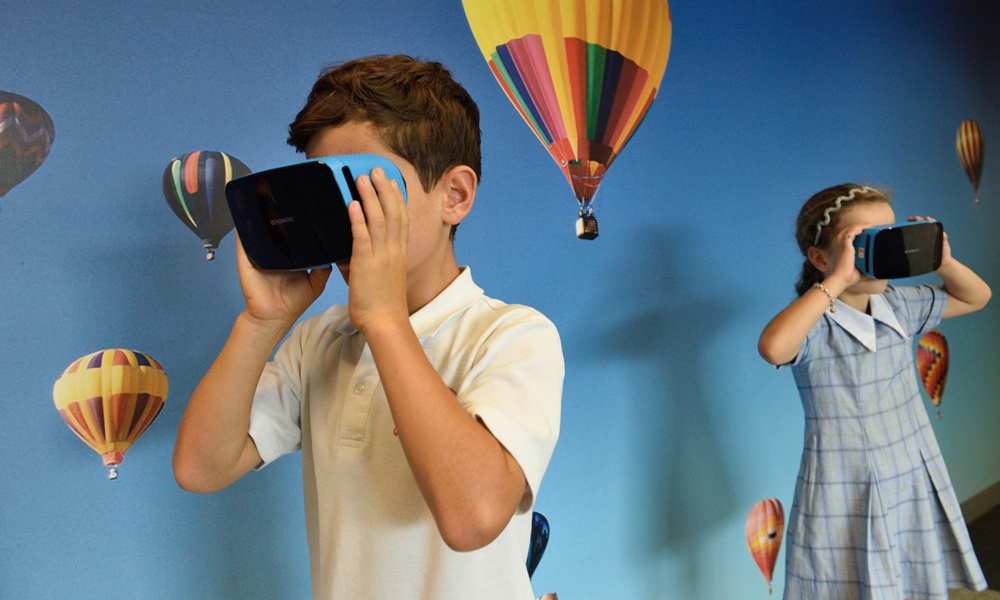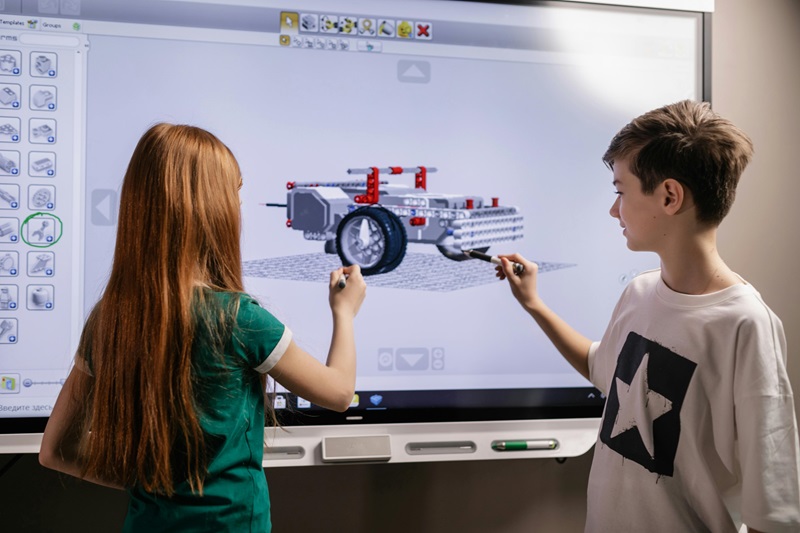
The Future of STEM Education in Virtual Spaces

Science, Technology, Engineering, and Mathematics (STEM) may seem boring and challenging. Such subjects can be too technical and difficult for many learners. However, the education landscape is changing. Innovative approaches are improving the way educators teach and students learn.
Virtual classrooms are sparking curiosity and creativity. Learners can study and experiment in safe and controlled environments. Lessons are no longer confined to the four corners of a boring classroom. Instead, it crosses towards a digital sphere. Immersive, interactive, and collaborative platforms are changing the game. They’re opening doors for better and equal opportunities.
Innovations That Are Redefining STEM Learning
Let’s be honest. Textbook theories don’t excite students. They can be monotonous for many. Luckily, STEM is now more hands-on and engaging. Virtual technologies are now reshaping the way STEM is taught and learned. In the future, we expect to see more innovative approaches, including those we’ll talk about below.
1. AI-Powered Simulations
Artificial Intelligence (AI) is a transformative force across many industries. STEM isn’t left behind. Students can explore concepts that are otherwise inaccessible.
In engineering education, AI simulations optimized design processes. It also allows virtual testing of prototypes. Using AI software allows learners to create and refine designs. Analyzing stress points and performance metrics becomes easier. AI simulations can even simulate robotic movements, such as an earthquake to test the structural integrity of a bridge or building.
And then there’s an AI math solver. It uses the power of AI to understand and solve problems. Even better, it can provide detailed explanations. Learners can gain step-by-step insights to understand the logic behind every solution. Hence, it does not only provide answers. Rather, it allows students to grasp abstract concepts easily and develop problem-solving skills they can apply in real life.
2. Virtual Reality (VR) Labs
Learning is more immersive because of VR labs. Interactive environments allow students to test and learn more creatively. It piques interest and increases engagement.
Take the case of traditional dissections in a biology class as an example. It provides hands-on learning in areas like physiology and anatomy. But it poses ethical concerns regarding animal rights and welfare. Accessibility can also be a problem. Finding animals to dissect can be challenging. Virtual models offer an alternative. No physical specimens are necessary.
In chemistry, VR labs allow molecular modeling to understand chemical reactions and bonding. It’s possible to conduct experiments without elaborate physical equipment and complicated setups. Learners can see complex chemical structures through 3D simulations. They are way better compared to simply reading about these structures explained in textbooks.
3. Blockchain Technology
Blockchain applications extend beyond cryptocurrency. Its decentralization and security make it a significant technology across various industries, including STEM education. It improves transparency and efficiency, among other things.
Issuance and verification of academic credentials becomes better because of blockchain. Traditional methods are often tedious. They’re susceptible to fraud. Blockchain creates a tamper-proof ledger that provides easy access to certifications, diplomas, badges, and other proofs of education.
Another use of blockchain in virtual spaces is about data management and sharing. Dealing with large data sets and research findings is easier. The transactions are immutable and transparent. Users can easily see modifications in the system.
Lastly, blockchain powers smart contracts. These are self-executing contracts with conditions embedded in the code. Therefore, they automate and streamline processes.
The Role of Gamification in STEM Education

Solving a math problem requires a methodical process. This linear approach includes identification of the right formulas and a step-by-step solution. It can become frustrating. But with gamification, it can be a daring quest to save the world.
There is no need for endless worksheets and boring calculations. Instead, students can solve puzzles, challenges, and missions. They can be part of a game, become virtual characters, and enter immersive worlds. Learning becomes more natural and engaging.
Rewards are a big part of what makes gamification tick. Gaining points and advancing to new levels are satisfying. In these virtual spaces, students go beyond learning. They are trying to compete and win. They are cracking a code, battling challenges, and solving problems. And they don’t have to do it alone. They can do it in groups, which brings us to the next topic.
1. Collaborative STEM Projects in Virtual Worlds
Teamwork is an important component of effective STEM education. Take for example the case of a student from Kenya. One can collaborate with peers from more developed nations like the United States and Canada. Walls are shattered and learners from all over the world can collaborate. They can share ideas in real-time, modify prototypes, and solve problems as a group.
Virtual whiteboards are among the most significant tools for promoting collaboration. Multiple users can contribute and share ideas in real-time. It promotes an inclusive learning environment. At the same time, it drives engagement. Students can also save and revisit lessons, which can aid in their studies.
Cloud-based coding platforms and virtual prototyping tools offer the same collaborative benefits. There are no geographical barriers in virtual spaces.
2. Accessibility and Equity in STEM Education
For ages, access to high-quality education remains a far-fetched dream for many. This is especially true among students from third-world countries. A lot do not have the means and opportunity. Financial barriers are limiting the capabilities of individuals. However, virtual spaces in STEM education are leveling the playing field.
Virtual spaces cater to different learning styles. Being adaptable allows such platforms to deliver study materials beyond the usual resources for reading and listening. Virtual models and 3D simulations can present concepts in a more enticing manner.
For students with disabilities, these changes are even more meaningful. For example, text-to-speech readers can be incorporated in learning platforms. These can open doors for equal and accessible education, so no STEM student gets left behind.
Wrapping Up
The future of STEM education is bright. Virtual spaces are driving it in a good direction. Even today, students are already fortunate to have modern digital tools at their disposal. And at the rate technology is changing, we can expect to see more improvements in the future. Expect STEM education to be more fun and engaging, accessible and collaborative.
Heavy textbooks with boring lessons will no longer hinder learners. Instead, they can study complex concepts and solve real-world problems through a fresh approach.